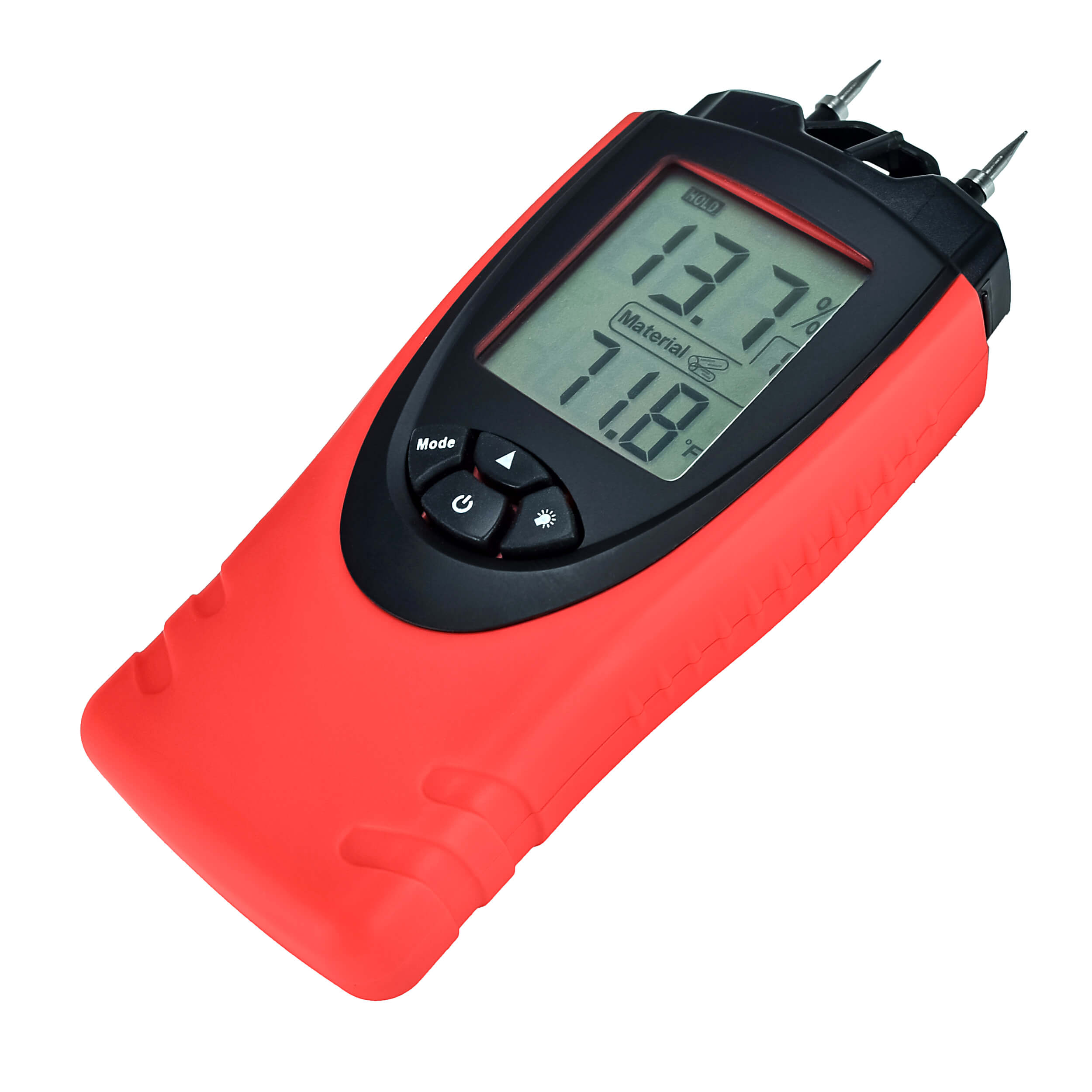Why Every Home Owner Demands a Moisture Meter: Trick Benefits and Functions
Why Every Home Owner Demands a Moisture Meter: Trick Benefits and Functions
Blog Article
Look Into the World of Moisture Meters: Everything You Required to Know
In the realm of moisture meters lies a globe of accuracy and usefulness that often goes unnoticed. These gadgets, while apparently uncomplicated, hold a wealth of information that can dramatically affect various sectors and applications. Comprehending how moisture meters run, the various types readily available, and their diverse usages can drop light on their significance in making sure quality and performance. By checking out the intricacies of dampness meters, one can discover a valuable device that transcends plain dimension, offering insights that can make a substantial distinction in many fields.
Just How Moisture Meters Work
Moisture meters operate by gauging the electrical conductivity or capacitance of materials to figure out the dampness content present. These meters are invaluable devices throughout various markets, consisting of woodworking, building and construction, and farming. By using various techniques such as pinless or pin-type technology, wetness meters give exact analyses that help professionals make informed decisions.
Pin-type dampness meters function by placing the sharp pins into the material being tested. On the various other hand, pinless moisture meters use electro-magnetic signals to scan a larger location without creating any type of damage to the material's surface area.
Regardless of the approach made use of, wetness meters play a critical function in stopping issues such as mold development, structural damage, or product defects triggered by excess wetness. Understanding just how these meters work is important for ensuring the top quality and stability of materials in various applications.
Kinds of Moisture Meters
Provided the crucial duty wetness meters play in various sectors, it is important to understand the different kinds available to specialists for accurately analyzing wetness levels - Moisture Meter. There are mostly two primary sorts of dampness meters: pin-type and pinless wetness meters

On the various other hand, pinless moisture meters make use of electromagnetic sensor plates to check a larger location of the material without triggering any damages. This type is appropriate for quickly scanning huge areas and is typically made use of for flooring, wall surfaces, and ceilings. Pinless meters are convenient for taking analyses on completed surfaces without leaving any type of visible marks.
Both sorts of dampness meters have their benefits and are picked based upon the specific demands of the job at hand. Comprehending the differences in between these types is important for professionals to make precise dampness assessments.
Applications Across Industries
Building and construction professionals count on wetness meters to assess the wetness levels in building products like drywall, timber, and concrete, which is important for maintaining structural honesty and stopping concerns Get the facts like rot or mold. The floor covering industry uses moisture meters to gauge the moisture content in subfloors prior to mounting different flooring treatments, avoiding pricey damages due to excess wetness. In the food market, moisture meters are utilized to check and control moisture levels in items such as grains, nuts, and dried out fruits to maintain freshness and top quality.
Tips for Making Use Of Moisture Meters
Make use of the dampness meter's calibration setups to make certain exact analyses when gauging the moisture content in various materials. Additionally, make sure the meter is established to the proper dampness array for the product you are determining to acquire the most specific outcomes.
When making use of a pin-type wetness meter, place the pins to the ideal depth recommended for the material being examined. This makes certain that the dampness analyses are drawn from the appropriate depth within the product, giving a much more precise representation of its dampness material. For pinless wetness meters, remember to maintain proper call with the material's surface area to get reliable analyses.
On a regular basis check and replace the batteries in your wetness meter to avoid unreliable analyses due to low power. Shop the meter in a secure and dry location when not being used to extend its life expectancy and maintain its accuracy. By following these pointers, you can maximize the efficiency of your moisture meter and acquire exact dampness material measurements throughout various materials.
Upkeep and Calibration
To guarantee the accuracy of wetness material measurements, regular maintenance and calibration of the moisture meter are important steps in its appropriate functioning. Calibration changes the moisture meter to guarantee that it offers reputable and constant results.
Calibration should be performed periodically, especially if the moisture meter is navigate to this site used regularly or in essential applications where specific dimensions are needed. Numerous moisture meters feature calibration devices or can be calibrated by professional solutions. Moisture Meter. It is suggested to keep a log of calibration dates and results to track the efficiency of the wetness meter in time. By maintaining and adjusting the wetness meter on a regular basis, individuals can trust the accuracy of the wetness material measurements gotten.
Final Thought

Finally, dampness meters play an important duty in numerous markets by properly determining the moisture web content of materials. Recognizing just how these devices function, the different kinds readily available, and appropriate maintenance and calibration are important for acquiring dependable results. Whether in building, production, or farming, making use of wetness meters assists make sure top quality control and performance in procedures.

In final thought, wetness meters play an important function in various industries by properly gauging the wetness material of materials.
Report this page